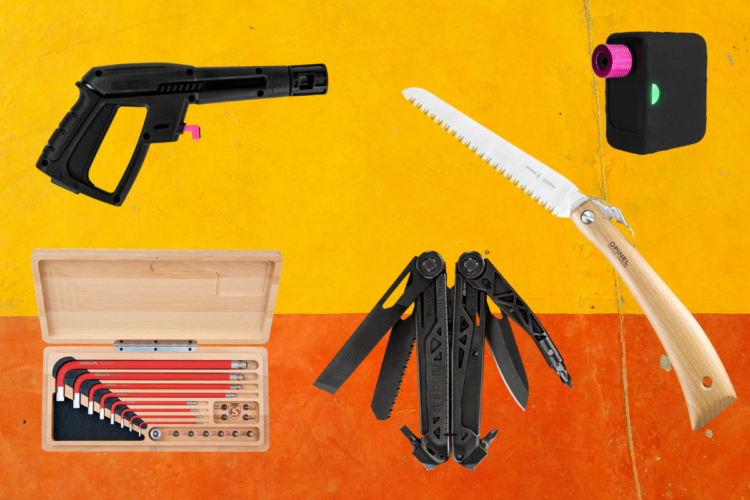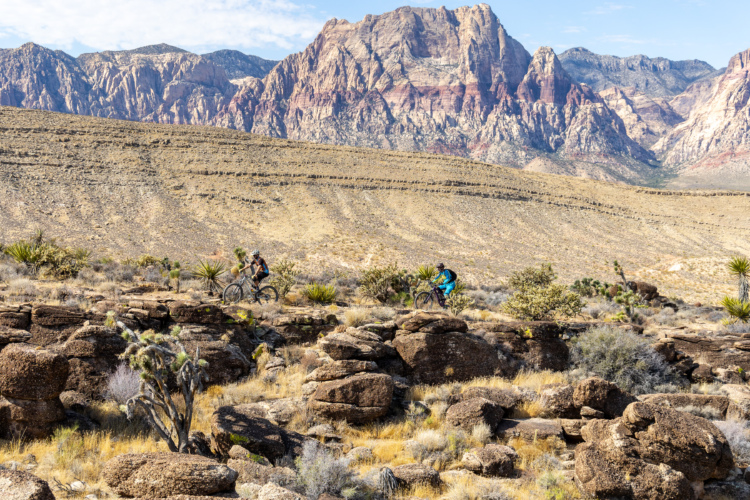
When you glance at the latest version of the Scott Genius hanging from a demo rack in a parking lot or in a photo on the internet, the amount of technology present in this mountain bike isn’t immediately apparent. But as you begin to peel back the layers, what on the surface appears to be just a flashy new trail bike is oh-so-much more.
Tire Sizes
To begin, the new Scott Genius is designed to run 29″ tires, or 27.5+ tires, or standard 27.5″ tires–the first bike I’ve heard of that claims to be able to run all three of these tire sizes. They accomplish this feat with a geometry flip chip in the rear linkage. Scott notes that the flip chip is all that’s needed to adjust between wheel sizes–there’s no need to swap the fork out, unlike many other brands on the market.
The maximum tire size is either 27.5×2.8″ or 29×2.6″ across all models. It’s important to note that while Scott claims the Genius can run 27.5″ tires, it’s only approved for 2.5″, 2.6″, or 2.8″ tire widths. This is similar to what we’ve seen Ibis do, as they spec the Mojo 3 with 27.5″ tires of the same range. I think this is an indication that we’re experiencing a bit of a break down in the plus VS standard tire size distinction, and this trend will only accelerate as other brands realize that the sagged BB height of a 27.5×2.8″ tire is nowhere close to that of a 29″ tire. For more thoughts on current tire trends stay tuned for our upcoming podcast on 29ers.
[see_also id=’218447′]
TwinLoc
The Genius also includes innovative technology that’s standard on Scott’s bikes, yet is extraordinary compared to other brands — most notably, the TwinLoc Suspension. “TwinLoc Suspension connects [the] fork [with] our patented NUDE shock platform and frame,” according to Scott. “Adapt to multiple trail settings, all at the flick of a switch. TwinLoc allows us to not only change compression damping, but also change the spring curve, dynamically altering the geometry of the bike.”
Thanks to this handlebar lever, the Genius offers either 150mm travel front and rear when full open, 100mm in the middle position, or full lockout. I found the lockout mode to be a true lockout–more on that below.
New Suspension Design and Trail Kinematics
The Genius gets the new suspension platform from the revamped Spark, featuring metric shock sizing and a trunnion mount NUDE Fox shock for maximum air can capacity. According to Scott, this new shock mount and suspension design provides “supple small bump sensitivity for exceptional traction, support in the mid-stroke, and predictable and comfortable end stroke progression.”
[see_also id=’194609′]
Updated Geometry
Of course, the Genius gets the slacked out geometry treatment, with a longer reach, slacker head tube angle, and shorter seatstays. Notably, the Genius actually gets a steeper seat tube angle. We’re seeing more and more brands recognize the benefit that a steeper seat tube provides for climbing. According to Scott, they “built geometry figures that would balance out the long front end for more stable descending.”
In the low BB setting for 29er tires, the head tube angle measures 65°, the seat tube is 74.7° (size medium), and the chainstays measure 438mm. In the higher BB setting for 27.5″ wheels and tires, all sizes offer a 65.6° head tube angle, a 75.3° seat tube angle, and 436mm-long chainstays. For a full geometry breakdown, check out this chart:
Innovative Carbon Layup: Evo-Lap Technology
Scott’s innovative carbon layup process, dubbed Evo-Lap Technology, has resulted in a diminutive 2,249g weight for the Genius’s frameset–and that weight includes the shock and hardware. According to Scott, this is the lightest frameset weight in category.
Here’s how Scott explains this technology and process:
With the proper selection of materials, eighty percent of the work to create a frame is done. But the remaining twenty percent requires most of our efforts. For this reason, our choice of the most advanced carbon fibers in the market is followed by intensive use of specific tools, like FEA (finite element analysis) software, to map out the carbon lay-up. With FEA software, we can simulate different forces on a virtual model of the frame and adjust the frame construction accordingly.
FEA software enables us to create complete virtual prototypes incorporating all the physical phenomena that exist in real-world environments.
With our Evo-Lap technology we model the frame to optimize the surface area, simulate tube structures with different ply orientations, observe the results of using different configurations, and test the stress distribution in different areas of the frame.
Thanks to this extensive computer modeling, we’ve optimized the carbon layers on all parts of the frame. The entire carbon Genius range benefits from EvoLap technology, giving exceptionally light and stiff frames without sacrificing durability.
While complete build weights have not been released yet, according to some reports this puts the high-end Genius models in the low 27-pound range.
Update August 31, 2017 at 9:50am MDT:
Official weights have just been released, coinciding with Eurobike. According to Scott’s website, the approximate weight for the 700 Tuned build is a scant 26.68 pounds! While that number undoubtedly doesn’t include pedals, that’s an absurdly light weight for a 150mm-travel trail bike.
The top-tier 700 Ultimate drops even lower, into the 25lb range, with a claimed weight of 25.79lbs.
700 Tuned Build Kit
I put the 700 Tuned build with 27.5+ tires to the test at Outerbike in Crested Butte. This build features the top-tier carbon frame, a Fox 36 Factory fork, Fox Evol shock, Scott’s TwinLoc Suspension system, SRAM’s X01 Eagle 12-speed drivetrain, Guide RSC brakes with 180mm rotors front and rear, X01 Eagle crankset, an integrated Scott chain guide, the Syncros Hixon iC SL Carbon cockpit, 150mm Fox Transfer dropper post, Maxxis Rekon tires, DT Swiss M1825 Spline CL wheels, and an integrated Syncros fender.
While I’ve already expounded on the ingenuity of the Hixon iC bar/stem combo, the other unique-to-Scott touches were also superbly executed. The Scott chain guide is unobtrusive, ultra-lightweight, bolts on easily, and is very effective. Similarly, the integrated Syncros fender mates to the Fox 36 fork seamlessly–both of these parts mesh seamlessly into the larger whole of the bike.
MSRP for this build is $7,399.
[see_also id=’217318′]
Other Build Kit Prices
Since the original press release dropped, I’ve acquired retail prices for the various build kits:
- 700 Ultimate: $9,799
- 900 Tuned: $7,499
- 700 Tuned (tested): $7,399
- Contessa 710: $5,199
- 720/920: $4,499
- Contessa 720: $3,999
- 930: $3,999
- 740/940: $3,999
Out on the Trail
Scott was gracious enough to lend me the Genius for a full day of testing on Crested Butte’s renowned Reno>Flag>Bear>Deadman’s loop. With 20 miles of trail and 3,500 feet of climbing and descending, this loop provided a great course to test the various facets of the Genius’s performance. Oh, and I did snag one chairlift run on the black diamond Avery descent, too…
Climbing
This epic loops begins with about 6 miles of dirt road climbing–the perfect place to test out the TwinLoc suspension. I found the lockout to be truly locked, turning the Genius into a rigid climber. In fact, it was so rigid that the ride was harsh on the rocky 4×4 road, which gave me the perfect opportunity to switch to the middle 100mm travel mode. I found the middle mode to provide plenty of ride-smoothing performance on the rocky climbs, but enough pedaling platform to feel significantly more efficient than the full-open mode.
While I didn’t have any previous Strava times on this ride to compare to, coupling the ultra-light weight (for a 150mm trail bike) with the superb TwinLoc system, and SRAM’s mega-low 50-tooth chainring granny gear, I felt like I could climb any grade imaginable! It’s a good thing, too: while the ride began with 6 miles of climbing, that was only the first of three big climbs, with the other two taking place primarily on singletrack.
In fact, on the third and final climb of the ride I saw a group of riders about a mile up the singletrack. I hadn’t seen anyone ahead of me all day, so I guessed that I must be gaining on them. “I wonder if I can reel that group in,” I thought to myself as I doubled down on the pedals. It took almost a half an hour, but before I reached the top of the climb I had overtaken that group and pulled ahead. I credit the Genius’s light weight and incredible climbing prowess with enabling me to overtake that group.
Transitioning
When the track switched abruptly from climbing to descending, a couple of switch flicks with my left thumb had me ready to shred. Admittedly there are a lot of levers on the handlebars with both the TwinLoc and the dropper post on the left side, but hey–at least this isn’t a 2x drivetrain! Being able to transition from climbing to descending without having to reach down and fumble for a lever on the rear shock, the knob on the fork, and then go for the dropper post lever speeds the transition up considerably.
Descending
I found the Genius to feel incredibly balanced on the descents. Compared to a lot of the long travel bikes I’ve been riding lately, the 150mm Genius, while not short travel, felt nimble and playful on the trail. In many ways, it feels like an even shorter travel bike than the numbers would relate–that is, until you smash into a big obstacle or send it off of a jump or a drop.
While I would need to spend a lot more time with this bike to provide a more detailed analysis, I chalk this up to the mid stroke support and end stroke ramp up provided by the suspension design. In moderately-technical terrain with continuous hits I felt like the bike was hanging out in the middle of the suspension travel. The stroke was extremely soft and plush on the front end but during constant activity, I sat comfortably around the middle of the travel.
Launching into the air and coming back to earth, and in big-hit rock gardens, the end stroke ramp up really came into play, allowing me to use all 150mm of suspension to its maximum capability and protecting me in even the gnarliest of terrain.
Choices
My accelerating distrust of plus tires was only confirmed yet again on this ride, with the 2.8″ Rekons refusing to hook up in even slightly loose conditions. But a big part of the Genius’s story is the wide array of choices that it provides the rider. If you don’t like plus tires, don’t buy them to begin with–go with a 29er version of this bike.
Even if you do get plus tires initially and then decide that they aren’t for you, following a progression similar to my own, thankfully switching wheel sizes doesn’t require buying a whole new fork (like on the Niner RIP 9 I tested). Just flip the geo chip, mount up a fresh set of hoops and treads, and you’re ready to keep rolling.
Finish Line
Superb climbing prowess, excellent descending confidence (even in a DH bikepark), the latest components, advanced technology only available from Scott/Syncros, and no end of wheel/tire options–what’s not to like about the Scott Genius? Don’t say the price: a $4,000 build on an alloy frame still provides a 12-speed SRAM drivetrain, dropper post, and all the TwinLoc goodness.
With this level of performance and innovative technology, I can’t help but wonder if Scott’s 2018 Genius is the perfect trail bike that we’ve all been waiting for.






























0 Comments